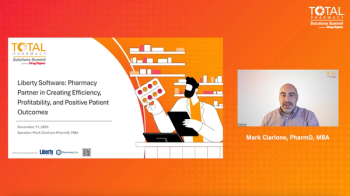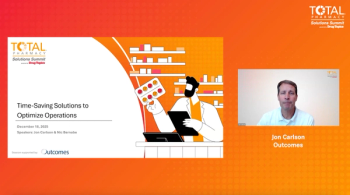
How community pharmacies are affecting flu vaccine rates
The U.S. rate for adult flu vaccinations has not increased significantly because of retail pharmacy access.
While community pharmacies are playing a much more important role in influenza vaccinations, the U.S. rate for adult flu vaccinations has not increased significantly because of retail pharmacy access, according to new research.
After 41 states changed their statutes allowing community pharmacists to provide flu vaccinations, per capita influenza vaccine prescriptions increased by 2.6%, according to an
However, the change in state rules did not significantly increase adult vaccination rates –an absolute percentage point difference of 0.9%– according to authors Kevin W. McConeghy, PharmD, with the Providence Veterans Affairs Medical Center and Coady Wing, Assistant Professor at Indiana University’s School of Public and Environmental Affairs.
“Possibly what is happening is people who were already planning to be vaccinated are shifting their business from a doctor’s office or medical clinic to a pharmacy at Target or Walgreens,” Wing said in a
The primary benefit from the increase in community pharmacies providing more vaccinations “may accrue to patients, who now have a more convenient and flexible way to obtain an important health service,” the authors wrote.
“Pharmacies are located in rural and urban areas. You don’t need an appointment, they accept insurance plans or cash, and they operate on expanded hours relative to primary-care clinics or other vaccinators,” McConeghy said in the statement. “In the end, patients are the winners, and that isn’t always the case in health care.”
Despite the increase in vaccinations at community pharmacies, there was no observed difference in the receipt of preventive health services, including routine physician office visits (an absolute percentage point difference of -1.9%).
“If influenza vaccination gives patients a reason to schedule physician appointments and physicians tend to bundle vaccinations with other preventive health services, then pharmacy-based immunization may result in fewer physician office visits and preventive services,” the authors wrote.
Because the authors did not find substantial increases in adult influenza vaccination rates or a resultant decline in other preventive health services, they surmise that “most of the people vaccinated by pharmacists would have been vaccinated anyway.”
Still, overall adult influenza vaccination rates increased from 19% in 1996 to 35% in 2010 in the non-elderly population and from 60% to 66% in the senior population over the same time period, the researchers found.
Newsletter
Pharmacy practice is always changing. Stay ahead of the curve with the Drug Topics newsletter and get the latest drug information, industry trends, and patient care tips.











































































































































































































